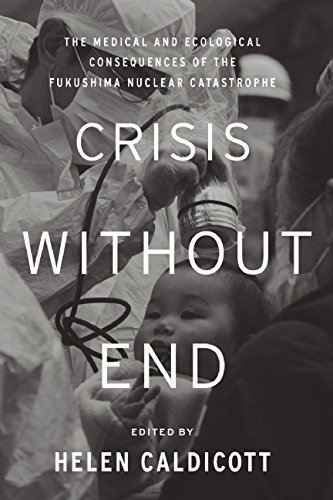

| CRISIS WITHOUT END The Medical and Ecological Consequences of the Fukushima Nuclear Catastrophe Helen Caldicott (ed.) New York: The New Press, October 2014 |
Rating: 4.5 Hign |
|||
| ISBN-13 978-1-59558-960-6 | ||||
| ISBN-10 1-59558-960-0 | 241pp. | HC/BWI | $26.95 | |
| Pages 3-4: | "Already, according to a 2009 report published by the New York Academy of Sciences, over one million people have perished as a direct result of that [Chernobyl] catastrophe." |
| This figure is highly suspect. Most authorities estimate an ultimate premature death toll of around 4,600, due to cancers and other long-term effects. |
| Page 6: | "Neutrons are large radioactive particles that travel many kilometers. They pass through everything, including concrete and steel." |
| Incorrect. A few feet of concrete, or a few inches of steel, will stop most neutrons. Perhaps the doctor is thinking of the similarly named neutrino. It does pass through most everything, because it interacts so weakly with ordinary substances. But since the human body is made of such, neutrinos are not a health hazard. |
| Page 7: | "There are over two hundred radioactive elements, each with its own half-life..." |
| The term "element" has a specific meaning in science: it designates a kind of atom which consists of a fixed number of protons and reacts consistently in chemical reactions. Science knows of only 118 different chemical elements at present. The term to use here is "isotope". |
| Page 11: | "No container remains effective for longer than one hundred years." |
| Another technical assessment that is highly suspect. |
| Page 15: | "Yablokov is a pioneer yet to be adequately recognized by the global scientific community for his extraordinary work." |
| Actually, I think the extraordinary nature of his work has been recognized — just not in the way Dr. Caldicott thinks. |

 To contact Chris Winter, send email to this address.
To contact Chris Winter, send email to this address.